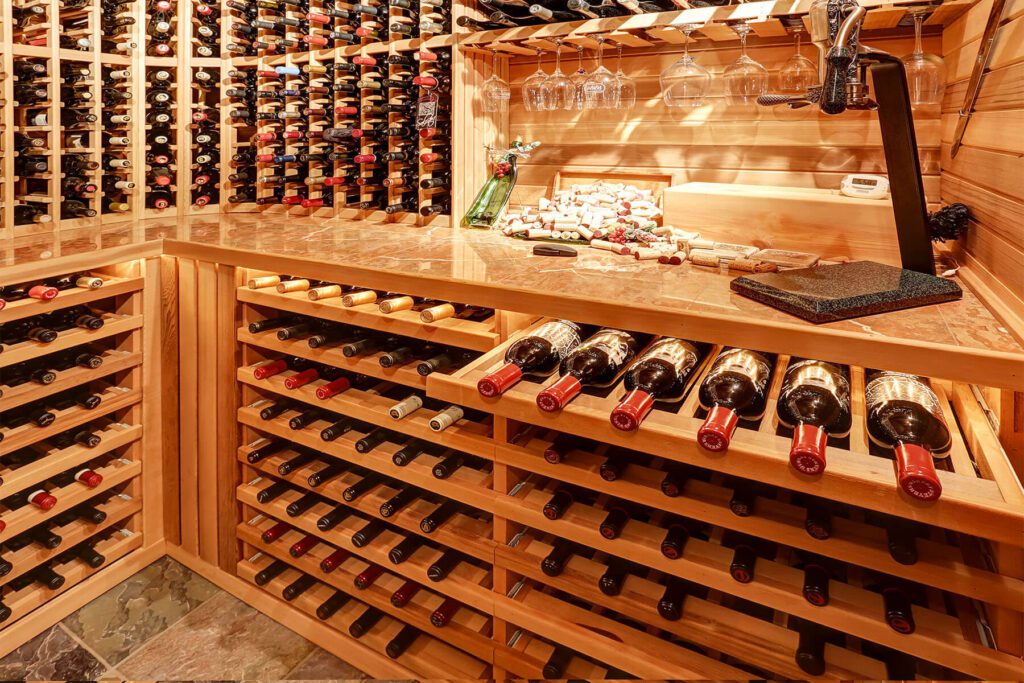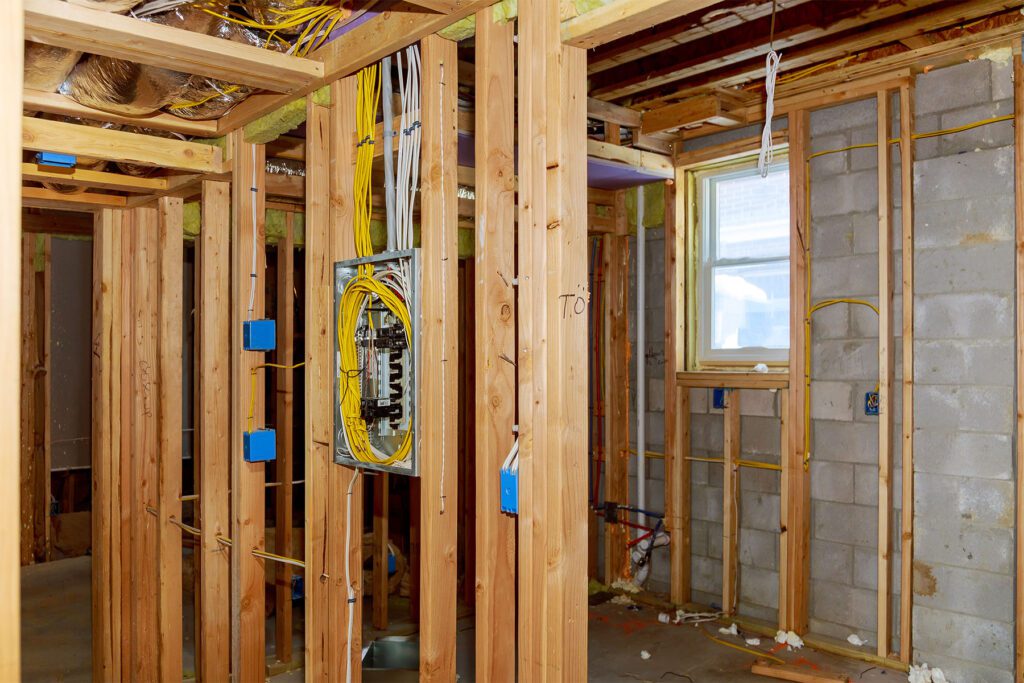By design, oenophiles are passionate and curious people! Wine lovers are often DaVincian in nature: multitalented, industrious, and determined to do things their way.
Think you’re handy enough to build your own wine cellar? We’re confident you can do it! Here are a few things to think about before you pick up the tools.
How Big Should My Wine Cellar Be? Start with the Size of Your Collection.
Not all wine cellars need to be large. In fact, a little goes a long way. As we’ve discussed in previous posts, a modest-sized space of just 25 square feet can store up to 500 bottles. If your collection is relatively small and you have no intention of expanding, this opens a world of possibilities.
If you’re imagining something a bit bigger, you are probably looking at a room in your house, like the basement, garage, or pool room.
Larger spaces are going to require framing out of walls and additional wiring, so be sure you are doing the construction up to local code and, of course, per the proper building permits. It may seem like a hassle at first, but home projects that aren’t built to code can void your homeowner’s insurance, hurt your asking price when it comes time to sell, and, in some cases, you may even be required to take the construction down before selling.

Where Should I Build My Wine Cellar?
A wine storage unit doesn’t have to be in the cellar. Almost any space in your home can be converted into an effective and beautiful place to house your collection! Take a quick walk around your house and consider it all, even if it seems unconventional: Unused closets, pantries, hallways, foyers, and even areas under the stairs are all viable spaces.
Once again, if you’re a niche collector or content with a conservative footprint, small spaces are abundant and oftentimes force you to get creative and allow you to have fun using what’s available.
And if you’re thinking big … how about a wine room? If you can afford to dedicate an entire part of your house to your wine collection, perhaps consider turning the dining room or den into a shrine to all things wine! When built properly, a wine room shouldn’t interfere or take away from the everyday living space. It is wholly possible to have a room that combines form and function.

What’s Your Budget for a DIY Wine Cellar?
This is one of the first places to start. A home wine cellar can be built for as little as a few thousand dollars and can cost upward of $100,000 if you want something top of the line.
As tempting as it is for many DIYers to build on the cheap, this is one place where you don’t want to cut corners. The materials that go into a wine storage unit need to be durable and long-lasting (and attractive, too).
Of course, humidity is the number one challenge in this type of environment, so whatever you use needs to be resistant to oxidation, rust, and corrosion. It goes without saying, but materials like marble, mahogany, and stainless steel tend to be a bit more expensive, and this is often why wine cellars can be a significant investment.
It also pays to think about where you’ll get these materials. You can certainly spend your time sourcing them one by one. But you’ll save yourself a lot of time and effort if you look to certified experts who’ve done this before. We suggest you browse our list of preferred vendors for advice and a basic idea of cost.
Once again, a little goes a long way. Aim for high quality, and if your budget is small, go small but mighty.
Do You Still Want to Build Your Own Wine Cellar? Make Sure the Essentials Are Covered.
Of all the suggestions here, this is where the rubber meets the road – or maybe where the bottles meet the rack. No matter how you approach your project, these are the essentials that all good wine cellars should include.
Vapor Barrier
Keep moisture in where it belongs and out where it doesn’t.
Insulation
The better insulated your space is, the more efficiently your environmental unit will work, and the longer it will last. If you are considering glass doors or windows, they should be double pane and thermally insulated as well.
Climate control
The most important piece of the puzzle; the beating heart of your cellar. Start with our Cooling Calculator to get the right unit for the job.
Proper ventilation
Condensation is a given in any refrigerated environment. As warm air passes over the coil of your cooling unit, water is produced, and it needs to be drained off. Access to a floor drain, sink, or a condensate pump will be necessary.
Access to electric and (optional) water
Your cellar, showcase, display, or wine room will need a dedicated primary power source for a cooling unit. It’s the sole guardian of your prized collection, and there can’t be room for error here. Access to plumbing, cold water at the very least, will be necessary if you want a feature like a sink or a wet bar in the space.
Need Expert Advice? Wine Guardian Has You Covered.
If you’re still on board at this point, congratulations! You’re one determined (or maybe stubborn) wine enthusiast. Where there’s a will, there’s a way, and hopefully, we’ve only galvanized your intentions by giving you the information you need to make this project a success. And if at any point in the journey, you get, um, cold, but perfectly humidified, feet, we’ve got you covered. Contact us for support and advice whenever you need it.

